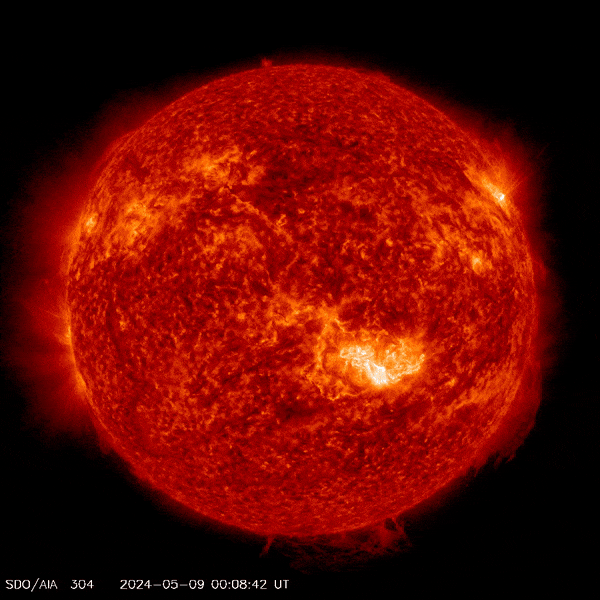We do not know exactly when the peak of activity for this current solar cycle is going to be, but we are really close to it – and the Sun is not disappointing with its activity. For the first time since January 2005, the NOAA Space Weather Prediction Center has issued a severe Geomagnetic Storm Watch. A lot of high-speed plasma from the Sun is coming towards our planet, ready to slam into it.
Our planet is good at protecting us thanks to its magnetic field, but it is important to be aware of the effects of the most powerful geomagnetic storms. A severe storm can cause widespread voltage control problems and create issues for the navigation and functioning of satellites – satellites that we need for everyday activity from communications to navigation. It can also create radio blackouts.
It is not only bad news, though. We are about to get some spectacular aurorae. As the solar plasma interacts with the Earth’s magnetosphere, particles will fly around and hit the atmosphere. Depending on the gas they interact with, they give different colors.
The amount and energy of plasma coming is so significant that the aurorae will be visible at lower magnetic latitudes than usual – maybe as low as northern California in the US and as low as northern Germany in Europe. In the Southern hemisphere, Tasmania and the south island of New Zealand should have some celestial light show.

Extreme Ultraviolet views of the Sun with flares released from the massive sunspot AR3664.
Image Credit: NASA/SDO/AIA
The cause of all this is to be found in an enormous and extremely active sunspot. Called AR3664, it has released several solar flares over the last few days. The sunspot is as wide as 16 Earths side by side, so big you can see it with the naked eye. But please wear eclipse glasses! We do not want a repeat of the Google trend on eclipse day!
There have been many coronal mass ejections released in this burst of activity. At least five of them are directed at Earth. It is possible that three of them might combined in a cannibal coronal mass ejection, a term that describes when a later coronal mass ejection is faster than the ones previously emitted. So it catches up to them, merges with them, and slams a tsunami of plasma on the planets on its path.

Coronal mass ejections seen from the Sun in the last few days (the bright dots are Venus on the right and Jupiter on the left)
Image Credit: NASA/ESA/SOHO
The plasma will begin to hit Earth from May 10 and will continue until May 12. The bulk of it hits on Saturday. A great time to get somewhere with a clear dark sky facing towards your nearest pole.
The are about 100 severe geomagnetic storms per solar cycle, so every 11 years or so. Extreme solar storms are much rarer with only four per cycle. But for example, the last one was a weird one with none of either. The last extreme geomagnetic storm was on Halloween 2003 and caused power outages in Sweden and damaged power transformers in South Africa.
Source Link: NOAA Issues Warning Strongest Geomagnetic Storm In 20 Years Is About To Hit Earth